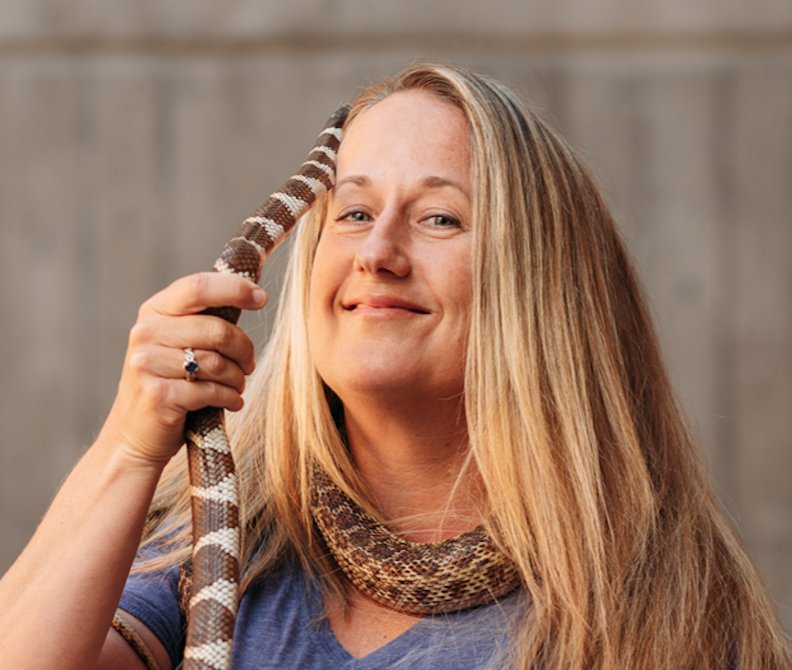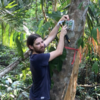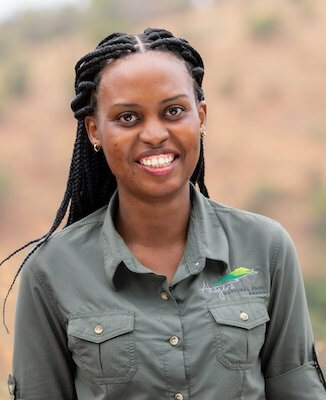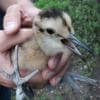Sensors already equip a range of tools to enhance monitoring capacity for conservation. Some of the higher bandwidth technologies, like camera traps and acoustic monitoring systems, have been essential elements of the conservation toolkit for decades, and thus have enough users that we've created dedicated WILDLABS groups to address them. But a whole range of lower bandwidth sensors beyond these core technologies are being increasingly integrated into conservation monitoring systems, and offer rich new insights into the wildlife and ecosystems we're all working to protect. As with many technologies, cost and access have historically been challenges to the adoption of new sensors, but with low-cost and open-source solutions on the rise, we're excited to see what the future of this space holds.
Getting Started with Sensors:
- Watch Shah Selbe's Tech Tutors episode on scaling FieldKit, an open-source conservation sensor toolbox, from a project to a successful conservation tech product.
- Check out our Virtual Meetup about Low-Cost, Open-Source Solutions in conservation tech, including a talk by Alasdair Davies on the Arribada Initiative's work with thermal sensors in early warning systems.
- For a more in-depth introduction, watch the first video in our datalogger mini-series: Freaklabs: How do I get started with Arduino?
In this group, you'll meet others who are using and innovating diverse sensors in their work, discuss ways to make sensors more effective & accessible for conservationists, learn about what sensors are already helping us accomplish in the field, and have the opportunity to ask and answer questions. Join this group to get started!
Header image: Emma Vogel, University of Tromsø
- @chmod000
- | he/they
I build sensing and perceiving hardware that is designed to address issues that matter to me. That ranges from assistive technologies, to conservation ecology, and connecting individuals with place and each other.
- 0 Resources
- 0 Discussions
- 7 Groups
St. Lawrence University
Professor of Biology at St. Lawrence University
- 0 Resources
- 2 Discussions
- 13 Groups
- @SamuelHertz
- | He/Him/His
I'm a PhD researcher at Royal Holloway University of London (Centre for GeoHumanities) researching modalities of sound-sensing technologies across climate and conservation sciences. Interested in ethics and histories of acoustic monitoring as well as new visualization methods.
- 0 Resources
- 3 Discussions
- 10 Groups
Swedish University of Agricultural Sciences
I study movement, behaviour and/or physiology using combine various sensors and tracking techniques. My focus is marine predators. However, my interest extends through the entire food web in all types of environment.
- 0 Resources
- 0 Discussions
- 7 Groups
Technology for Wildlife Foundation
- 0 Resources
- 3 Discussions
- 5 Groups
- @Eric24
- | he/him
Georgia Institute of Technology
PhD student in Computer Science specializing in sensing and wireless communications for social good
- 0 Resources
- 7 Discussions
- 1 Groups
I am a budding engineer doing Electrical and Telecommunications Engineering and I am passionate about innovation and technology and how I can use it to make an impact in society.
- 0 Resources
- 0 Discussions
- 5 Groups
- @Andrew_Hill
- | He/Him
Open Acoustic Devices
I am co-founder of Open Acoustic Devices, the creators of AudioMoth and HydroMoth. My background is Electronic Engineering and Computer Science.



- 0 Resources
- 5 Discussions
- 2 Groups
- @alex_rogers
- | He/him/his
University of Oxford
I am a Professor of Computer Science at the University of Oxford where I work on developing novel low-cost conservation technology (including AudioMoth and SnapperGPS).


- 0 Resources
- 14 Discussions
- 3 Groups
- @tkswanson
- | she/her
San Diego Zoo Global
Research Coordinator II for the Conservation Technology Lab at SDZWA
- 1 Resources
- 0 Discussions
- 6 Groups
M.A.P Scientific Services
Co-founder and Director of M.A.P Scientific Services, South Africa
- 0 Resources
- 0 Discussions
- 8 Groups
Georgia Institute of Technology
Grad Student
- 0 Resources
- 2 Discussions
- 7 Groups
In a recent publication we tested Underwater Passive Acoustic Monitoring (UPAM) as a feasible non-invasive technique to study the calling behavior of therathened aquatic Andean frogs under natural conditions in the...
6 April 2024
Article
You’re invited to the WILDLABS Variety Hour, a monthly event that connects you to conservation tech's most exciting projects, research, and ideas. We can't wait to bring you a whole new season of speakers and...
22 March 2024
This funding opportunity is to support projects to enhance existing, high TRL (7-9) marine biogeochemical sensors and integrate with National Marine Equipment Pool’s autonomous underwater platforms. You must be based...
11 March 2024
The IQOE Task Team on Low-Cost Hydrophones for Research, Education, and Citizen Science is looking for industry partners to develop a low-cost hydrophone.
15 December 2023
Funding
With $60,000, $30,000, and $10,000 grants available for 14 outstanding projects, the support of engineering and technology talent from Arm (the leading semiconductor design company), and access to the world’s biggest...
1 December 2023
Article
Read our interview with Clementine Uwamahoro, African Parks’ Country Manager in Conservation Technology overlooking technology operations for both Akagera National Park and Nyungwe National Park.
29 November 2023
The Department of Applied Ocean Physics and Engineering (AOPE) at the Woods Hole Oceanographic Institution (WHOI) seek to hire 1-2 scientists at any of the Assistant/Associate/Senior Scientist levels to develop research...
27 November 2023
TagRanger® is a state-of-the-art wildlife finding, monitoring and tracking solution for research, conservation and environmental professionals. With superior configurability for logging data, reporting location and...
23 November 2023
Yale University & Map of Life Rapid Assessments - XPRIZE
8 November 2023
Yale University & Map of Life Rapid Assessments - XPRIZE
8 November 2023
Yale University & Map of Life Rapid Assessments - XPRIZE
8 November 2023
The new white paper from Rainforest Connection (RFCx) explores the power of ecoacoustics and AI to monitor biodiversity and track progress towards GBF targets using case studies from around the world.
20 September 2023
April 2024
event
November 2023
event
September 2023
event
June 2023
event
| Description | Activity | Replies | Groups | Updated |
|---|---|---|---|---|
| Hi everyone, @craig joined last month's Variety Hour to chat about Tagranger, which you can read more about here. A TagRanger®... |
|
Biologging, Connectivity, Sensors | 1 day 12 hours ago | |
| 'Most importantly, we have to make it play a MIDI version of the DoctorWho theme song when you arm the device. That has to be the #1 feature if you ask me!' Seconded! |
+9
|
Acoustics, Biologging, Emerging Tech, Open Source Solutions, Sensors | 2 days 13 hours ago | |
| Sounds good. Just sent you a private message. |
|
Climate Change, Conservation Tech Training and Education, Sensors | 4 days 10 hours ago | |
| This is so cool @Mauricio_Akmentins - congrats and look forward to seeing your project evolve! |
|
Acoustics, Biologging, Climate Change, Conservation Tech Training and Education, Data management and processing tools, Emerging Tech, Open Source Solutions, Protected Area Management Tools, Sensors, Software and Mobile Apps | 1 week 4 days ago | |
| First things first, our team, @jcguerra10, @hefca, and myself, is thrilled to share with immense pride... |
|
Build Your Own Data Logger Community, Data management and processing tools, Sensors | 2 weeks 4 days ago | |
| Hi @Henrikcox I hope you are well. I am not sure if you may remember myself and my colleague from CLS. We had a meeting and met in-person at Earthranger last year. ... |
+15
|
Human-Wildlife Conflict, Sensors | 3 weeks ago | |
| Unless you are planning on making a mesh network between nodes then the total distance spanning the location of all the nodes is important to know, not just the intra node... |
|
Sensors, Protected Area Management Tools | 1 month 2 weeks ago | |
| Hi Danilo. you seem very passionate about this initiative which is a good start.It is an interesting coincidence that I am starting another project for the coral reefs in the... |
|
Acoustics, AI for Conservation, Biologging, Camera Traps, Citizen Science, Climate Change, Community Base, Connectivity, Drones, Emerging Tech, Human-Wildlife Conflict, Open Source Solutions, Sensors, Software and Mobile Apps, Wildlife Crime | 2 months 2 weeks ago | |
| Real nice video. I'll have another look in the weekend in detail. |
+10
|
Acoustics, Community Base, Protected Area Management Tools, Remote Sensing & GIS, Sensors | 2 months 3 weeks ago | |
| Fire detection is a sort of broad idea. Usually people detect the products of fire, and most often this is smoke.Many home fire detectors in the US use a radioactive source... |
|
Community Base, Conservation Tech Training and Education, Data management and processing tools, Ethics of Conservation Tech, Human-Wildlife Conflict, Open Source Solutions, Protected Area Management Tools, Sensors, Wildlife Crime | 2 months 3 weeks ago | |
| Thank you for sharing! Super interesting, as we don't see many underwater stereo cameras! We also use Blue Robotics components in our projects and have found them reliable and... |
|
Sensors, Camera Traps, Marine Conservation | 3 months 3 weeks ago | |
| I am working on a prototype to detect and alert for temic & karbadust. They are used for the poisoning of waterholes in South Africa.... |
|
Sensors | 3 months 3 weeks ago |
Tree Canopy Tools workshop
29 October 2020 5:10pm
RSEC Journal: Ecoacoustics and Biodiversity Monitoring
 Remote Sensing in Ecology & Conservation
Remote Sensing in Ecology & Conservation
28 October 2020 12:00am
Leg band-style tags...but for mammals
16 October 2020 4:06am
27 October 2020 2:01pm
Hello Rob,
I have seen the bracelet style used on large mammals with mixed success and failure. The main considerations are terrain the animal uses, and fitting the bracelet properly. Both affect the 1. durability of the tag and 2. whether it cuts into the skin. In the case of fitting to the leg, tighter is better to minimise rubbing and cutting in, but it will depend on the species you are thinking to tag. Would be great to hear how the development goes for small-medium size mammals.
Best,
Michelle
Tiny, Cheap, Modular Ant Sensor Development
3 August 2020 10:18pm
9 August 2020 11:30am
Hi Andrew,
I watched your vid and finally I've got a decent idea of what you're trying to do! Took a while but what can I say!
I absolutely agree that the machine vision techniques are overkill and that you're on to something here. It got me thinking about these red line lasers, which project a straight line onto a surface. These are used in place of chalk lines in construction sometimes. If you were to project a red laser line onto a tree branch, and focus an image of a length of that line onto a detector (LED), you could pick out the flicker in intensity as ants cross the line.
If you want to get fancy, you can use your optical mouse as the sensor, or a regular camera such as OV7660 for a couple of bucks. You'd bolt the laser to the camera such that no matter what surface you projected the line onto, the line would show up only as pixels on row 240 (say) of the image. Now it's a matter of watching the pixel values fluctuate. You can use the usual signal processing techniques to filter out the wrong frequencies. Use 2 laser lines on 1 camera and you can get ant travel direction too.
10 August 2020 3:37pm
here's an example of an early artistic prototype
https://youtu.be/W1TdSzt3ZbM
16 October 2020 4:05am
Amazing stuff Andrew! The dips in light idea made me think of exoplanet hunting straight away! Such a cool idea!!
Opportunity: Sustainable Development Goals Internship
 UN Environment Programme World Conservation Monitoring Centre
UN Environment Programme World Conservation Monitoring Centre
13 October 2020 12:00am
#Tech4Wildlife News: Airdropping Sensors from Moths
 University of Washington
University of Washington
13 October 2020 12:00am
Meet the Scientists of Black Mammalogists Week!
 Black Mammalogists Week
Black Mammalogists Week
10 September 2020 12:00am
Tech Tutors: Creating Custom Hardware with Arduino
12 August 2020 1:26am
19 August 2020 2:23pm
Hey Akiba
Super excited for the talk tomorrow, I've only just discovered Arduino so I'm really keen to learn more!
I would be very grateful for any advice regarding using Arduino to programme AudioMoths. I'm potentially interested in exploring Arduino as I understand the Arduino Nano 33 BLE can be used to download self-taught models created on Edge Impulse?
Do you have any experience with Arduino used with Edge Impulse models? Due to 24hr activity of my subjects (human hunters), I need the AudioMoths 'listening' 24hrs, but ideally to save battery they will only be programmed to 'record' when identifying the correct sounds using trained data. Deployment will be 5 months in dense Amazon rainforest so getting the AudioMoths programmed for long durations would be incredible!
I'd appreciate any thoughts on this, thank you again!
Maxine
1 September 2020 11:44am
Hi Maxine.
I totally missed this post, but we'll be doing office hours once we kick off the Arduino series. In regards to your questions, at this moment, I don't see any environment to program the Audiomoth using the Arduino IDE and platform. You'd have to use a standard toolchain to program them which may be a bit daunting. I also haven't spent much time with Edge Impulse so I can't really comment on it.
It sounds like you're looking for a smart way to trigger your "audio trap" to record during a specific event. There may actually be a few potential solutions, especially if you are looking for human hunters. This could consist of motion detection, sound level detection, sound frequency detection (ie: chainsaws), photointerruption (think a chime when entering a shop), or many other ways. Perhaps we can discuss during one of the office hours. Or if you want to start a separate thread, it may be a good opportunity to brainstorm potential solutions.
Hope that helps.
Akiba
2 September 2020 11:28am
Hi Akiba
No worries, thanks for responding!
I'd love to delve into more detail on this once the new series has started and I have an idea of the tools and kit required! I think what you're proposing sounds like a real space and energy saver on the machines so very excited about this!
I'll look out for the series launch and definitely be in touch! :)
Thank you so much!
Maxine
Tech Tutors: How do I build bespoke conservation technology?
29 July 2020 9:06pm
20 August 2020 2:51pm
Hi Nigel
When talking about using switched regulators, does using e.g. 12V batteries with a 5V output extend the battery life or only slowly release the power so it doesn't short the device? I understand life-span is more to do with capacity and this is usually higher with voltage... but that's as far as my battery knowledge goes!
Any guidance would be greatly appreciated, thanks!
Maxine
21 August 2020 3:27pm
Hi Maxine,
A switched regulator rather than a fixed one doesn't use as much power trying to maintain a constant voltage. Most USB driven equipment will have internal power circuitry to reduce this further for the 3.3V etc that most chips require, so that if there are fluctuations in the 5V supply are of little consequence. This weblink gives you an explanation.
https://www.renesas.com/sg/en/products/power-management/linear-vs-switching-regulators.html
We built our own regulators at one stage but found the off the shelf ones that I highlighted in the talk generally only use an additional 5mA of current which on most remote solar/battery operating system is negligible.
Remember: Power in Watts= Volts x Amps so you will see less current drawn from your battery at higher voltage. Battery capacites are given in Ah or mAh which is the current multiplied by the operating time in hours.
Hope this helps and good luck with your work
Nigel
28 August 2020 4:43pm
Hi Maxine,
There are pros and cons to switching regulators and linear regulators. Linear regulators "throw away" the excess voltage in order to maintain a constant output voltage. This is wasteful, but on the plus side when the equipment is asleep then the linear regulator draws only microamps. A switching regulator is as high as 95+% efficient when running close to it's rated output, but when the equipment is asleep the quiescent draw might be in the milliamp range (1000x higher).
So linear regulators do best when they are powering equipment that sleeps a lot, and switchers do well otherwise, but you'd still need to do the sums. In general, switchers are most efficient when input and output voltages are not wildly different and the load is drawing not less than 5% of the rated current. Switchers can also be noisy, in the electrical sense. This can affect the quality of the data obtained, so some testing should be done. Choosing a switching regulator is more involved than choosing a linear regulator.
Thanks,
-harold
Designing a Camera Mount with FLIR and WWF
 Ashley Rosen
Ashley Rosen
24 August 2020 12:00am
Laure Joanny Reviews: Tech Tutors' How Do I Repair My Camera Traps?
 Laure Joanny
Laure Joanny
20 August 2020 12:00am
7 October 2022 6:13pm
Sustainable Fishing Challenges: Fishing Gear Innovations
 Daniel Steadman
Daniel Steadman
19 August 2020 12:00am
Challenge: ElephantEdge
 hackster.io
hackster.io
11 August 2020 12:00am
Metal Detecting Sensors for Anti-Poaching
 Sam Seccombe
Sam Seccombe
10 August 2020 12:00am
Tech Tutors Recording: How do I get started with Arduino?
 Akiba
Akiba
10 August 2020 12:00am
Sustainable Fishing Challenges: Fishing Vessels of the Future
 Daniel Steadman
Daniel Steadman
4 August 2020 12:00am
How do I use portable genomics in the field?
 Ineke Knot
Ineke Knot
3 August 2020 12:00am
Event: StreamingScience's #Tech4Wildlife Thursdays
 StreamingScience
StreamingScience
3 August 2020 12:00am
Tracking Wild Reptiles, Amphibians, And Their Temperatures
 Emily Taylor
Emily Taylor
31 July 2020 12:00am
15 September 2023 11:02pm
16 October 2023 4:07pm
OpenCollar Update 2
7 May 2019 12:49pm
1 June 2019 12:14pm
Cool stuff Laurens! I'm closely following the open collar developments which triggers some ideas on what we could do for the river dolphins. Look forward to connect shortly! Cheers
28 August 2019 11:18am
Hey Laurens,
How did your field tests in Rwanda go?
Steph
30 July 2020 4:04am
Hi. I've been following the opencollar initiative and was wondering what the current status is. The project looks amazing!
How do I use a drone to capture radio-tracking data?
 Debbie Saunders
Debbie Saunders
27 July 2020 12:00am
New article: Bridge et al. 2019 An Arduino-Based RFID Platform for Animal Research
17 July 2019 2:13pm
18 July 2019 2:33am
@TedHowardNZ is this something you could use?
18 July 2019 4:40am
Looks interesting.
Will explore more deeply when I have some more time.
Thanks very much
23 July 2020 11:16am
Hi all,
Some ETAG rfid-readers developped by Eli Bridge et al. are now avaible at https://www.labmaker.org/collections/earth-and-ecology/products/etag. The price is high, though: USD139.
Note that these are NOT sold by Eli's team: Eli made the design open-source so LabMaker updated and produced some.
Yvan
Interest in group order of ETag RFID readers
5 December 2019 8:05pm
23 July 2020 11:13am
Hi all,
Some ETAG rfid-readers are now avaible at https://www.labmaker.org/collections/earth-and-ecology/products/etag. The price is high, though: USD139.
Yvan
How do I build bespoke conservation technology?
 Nigel Butcher
Nigel Butcher
20 July 2020 12:00am
Training Opportunity: Durrell Conservation Academy
 Durrell Conservation Academy
Durrell Conservation Academy
16 July 2020 12:00am
How do I repair my camera traps?
13 July 2020 12:00am
Kākāpō Dreaming: A Wildlife Drones Adventure
 Wildlife Drones
Wildlife Drones
8 July 2020 12:00am
Era of the Condor: A Species' Future in Recovery (Part 3)
 Ellie Warren
Ellie Warren
2 July 2020 12:00am
Era of the Condor: A Species' Future in Recovery (Part 2)
 Ellie Warren
Ellie Warren
25 June 2020 12:00am
Seeking research projects related to monitoring wildlife behavior
20 June 2020 3:34pm
22 June 2020 8:54pm
Hi Ben!
I think we've had correspondence on Twitter in the past, but can't remember for sure... Anyways, I'm a primatology PhD student and do fieldwork in Madagascar studying lemurs (specifically Ranomafana National Park). My dissertation is on lemur vocal communication, but I am doing an applied chapter focused on passive acoustic monitoring as well. I've tested out a bunch of different PAM devices (ARU's-autonomous recording units) e.g., SongMeter, Swift, AudioMoth and am currently annotating call files and prepping a training dataset that I hope to begin using with an ML model to identify species-specific calls. Vocals are a great use-case with behavior and tech as you can sometimes ID contexts, individuals, etc based on acoustic structure or usage which would be really cool (albeit very complicated) to incorporate.
Also have some experience with camera-traps, and the area I work in in Mada is part of the TEAM network so I'm hoping to incorporate camera-traps and ARUs in the same area. I work with local researchers and students (via the Malagasy-run Centre ValBio research station) and am looking to develop community-led initiatives as well so I've got the low-cost, open-source interest as well.
I'll stop typing an essay now, but definitely would love to chat!! Feel free to message me on Twitter or email me ([email protected]).
23 June 2020 1:56am
I'd love to chat more! I'll be reaching out soon!





















































26 October 2020 2:23pm
Hi Rob,
I can't think of any examples of this with primates, mostly because they'd probably figure out how to get them off or mess with them. Using collars at least limits the biting possibilities but still, they're dang smart! It would be hard I think to ruggedize it enough to deal with all that but then still have it be light-weight and non-bothersome enough to ethically use it (particularly with smaller mammals). Just some thoughts on the practicality aspect for primates; can't speak to other mammals but seems like this would be a similar issues for carnivore species.
-Carly